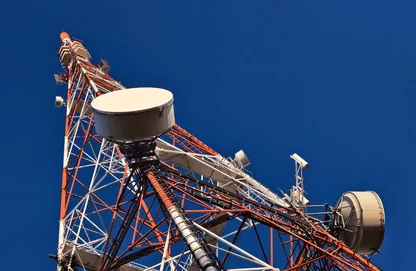 Mobile data traffic will grow three times faster than fixed traffic in the period 2014-2019, driven by more devices and users, as well as faster networks, according to the latest forecast from Cisco.
Mobile data traffic will grow three times faster than fixed traffic in the period 2014-2019, driven by more devices and users, as well as faster networks, according to the latest forecast from Cisco.
Global mobile data traffic will reach an annual run rate of 292 billion GB by 2019, up from 30 billion in 2014.
A latest annual update of the Cisco Visual Networking Index (VNI) Global Mobile Data Traffic Forecast for 2014 to 2019, the ongoing adoption of more powerful mobile devices and machine-to-machine (M2M) connections combined with broader access to faster cellular networks are key contributors to significant mobile traffic growth.
In 2014, 88 percent of global mobile data traffic was "smart" traffic, with advanced computing/multi-media capabilities and a minimum of 3G connectivity, but that figure is expected to rise to 97 percent by 2019.
"The ongoing adoption of more powerful mobile devices and wider deployments of emerging M2M applications, combined with broader access to faster wireless networks, will be key contributors to significant mobile traffic growth in the coming years. This mobile-centric environment will give service providers a new landscape of challenges and opportunities to innovatively deliver a variety of mobile services and experiences to consumers and business users as the Internet of Everything (IoE) continues to take shape,” said Doug Webster, Vice President of Service Provider Products and Solutions Marketing, Cisco.
“The worldwide shift from basic-feature phones to smartphones – combined with the continued growth in tablets, a resurgence in laptops with tablet-like capabilities as well as expanding machine-to-machine (M2M) applications – are key factors supporting the increasing smart traffic trend,” the report mentioned in its statement.
“From a global mobile network perspective, 3G is expected to surpass 2G as the top cellular technology, based on connection share, by 2017. By 2019, 3G networks will support 44 percent of global mobile devices and connections; 4G networks will support 26 percent of connections, though will generate 68 percent of traffic,” it added.
Also read: 20% fall in data tariffs expected due to Reliance Jio’s entry: Fitch Report
In terms of top line traffic growth, the Cisco VNI Global Mobile Data Traffic Forecast projects that global mobile data traffic will reach an annual run rate of 292 exabytes by 2019, up from 30 exabytes in 2014.
These predicted 292 exabytes would represent 292 times more than all Internet Protocol (IP) traffic, fixed and mobile, generated in 2000; or 65 trillion images (e.g., multimedia message service or Instagram) – 23 daily images per person on earth for a year; or6 trillion video clips (e.g., YouTube) – more than two daily video clips per person on earth for a year.
More mobile users
By 2019, there will be 5.2 billion mobile users (up from 4.3 billion in 2014). In 2014, nearly 59 percent of the world's population (7.2 billion people) was comprised of mobile users; by 2019, more than 69 percent of the world's population (7.6 billion people) will be mobile users.
More mobile connections
By 2019, there will be approximately 11.5 billion mobile-ready devices/connections, including 8.3 billion personal mobile devices and 3.2 billion M2M connections (up from 7.4 billion total mobile-ready devices and M2M connections in 2014).
Faster mobile speeds
Average global mobile network speeds will increase 2.4 fold from 2014 (1.7 Mbps) to 2019 (4.0 Mbps). By 2019, mobile video will represent 72 percent of global mobile data traffic (up from 55 percent in 2014).
Impact of Mobile M2M Connections (and Wearable Devices)
M2M refers to applications that enable wireless systems to communicate with similar devices to support global positioning satellite (GPS) navigation systems, asset tracking, utility meters, security and surveillance video. Wearable devices are included as a sub-segment of the M2M connections category to help project the growth trajectory of the Internet of Everything (IoE).
The number of wearable devices globally will grow five-fold, reaching 578 million by 2019, up from 109 million in 2014, with the majority of devices anticipated in North America and Asia Pacific.
This is expected to fuel 18-fold growth in mobile traffic from wearable devices between 2014 and 2019, with most of it channeled through smartphones.
Increase in 4G Connectivity
Many global service providers are deploying 4G technologies to address consumer and business users' strong demand for wireless services and content. In many emerging markets, service providers are creating new mobile infrastructures with 4G solutions. In some mature markets, service providers are supplementing or replacing legacy 2G or 3G solutions with 4G technologies.
26 percent of all global devices and connections will be 4G capable by 2019
The number of 4G connections globally will grow 18-fold, from 459 million in 2019 to 3 billion by 2019. By 2017, 3G will surpass 2G as the top cellular technology based on connection share.
In 2014, 4G connections accounted for 40 percent of total mobile data traffic; by 2019, 4G connections will account for 68 percent of total mobile data traffic.
Lastly, In 2014, the average 4G connection generated 2.2 GB of mobile data traffic per month; by 2019, the average 4G connection will generate 5.5 GB of mobile data traffic per month, 5.3X higher than the 1.04 GB/month for the average non-4G connection.















